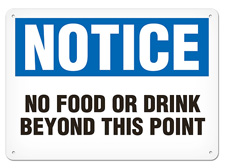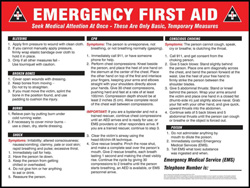| The Home page of ILPI's Safety Data Sheet (SDS) Resource, the leader in SDS information since 1995! | |
| The history and philosophy behind this resource. | |
| A curated collection of books and reference materials concerning Safety Data Sheets and closely related topics. | |
| Paste your plain text SDS into the SDS-Demystifier, and it will be converted into a hypertext-enriched document with links to detailed explanations of each key term. | |
| An extensive list of frequently asked questions about Safety Data Sheets including regulations, content, compliance, and more. | |
| A humorous take on Safety Data Sheet jargon. Fill in the blanks on our entry form to generate a personalized Unsafety Data Sheet to share with your coworkers. | |
| Since 1995, we've maintained this massive curated list of the best places to find Safety Data Sheets on the Internet. | |
| You are here! Way more than a glossary, this hypertext-enhanced resource covers hundreds of SDS-related terms and expert knowledge. Each entry includes both the SDS relevance and links to additional authoritative resources. | |
| Archived results of Safety Data Sheet related polls taken by some of our millions of site visitors | |
| The OSHA regulations behind SDS regulations, including the inspection guidelines and over 400 official interpretations letters under the Hazard Communication Standard | |
| Commercial suppliers of SDS authoring and management software as well as cloud compliance services. | |
| Commercial companies that will create SDS's for your specific needs as well as SDS translation companies. |

Safety signs, banners, and scoreboards? Get yours at Safety Emporium!
Definition
Ingestion is the act of taking something (food, medicine, liquid, poison etc.) into the body through the mouth. Synonyms include "swallowing", "taking internally", and "eating".
Do not confuse this with the term indigestion, which is an upset stomach.
Additional Info

Ensure safe laboratories with laboratory signs and labels from Safety Emporium.
Avoid ingestion of hazardous chemicals (obviously!). Recognize that you can accidentally ingest toxic materials by eating/handling food in areas where toxic substances are used. Never put anything in your mouth when you are working with hazardous chemicals. Having a chemical on your hands and then eating or smoking are common ways that chemicals are accidentally ingested. Be certain to wash your hands thoroughly after working with hazardous chemicals.
Be sure that all containers are properly labeled. NEVER STORE CHEMICALS OF ANY SORT IN FOOD CONTAINERS. Do not store food and chemicals in the same refrigerator. Children can not read labels, so keep all chemicals out of the reach of children. If applying pesticides with a hose sprayer, be sure to use a backflow preventer to keep toxic materials from backing up into your drinking water line.
Always have your poison control center phone number handy with your other emergency information. NEVER induce vomiting unless specifically instructed to do so by a poison control center.
Finally, always clean up chemical spills as they can lead to unexpected ingestion. For example, children and dogs find antifreeze (ethylene glycol) to be very sweet-tasting. Ingestion of ethylene glycol can lead to liver failure and death, especially if not treated quickly.
SDS Relevance
This term usually appears on a Safety Data Sheet as a route of entry of the material into the body, in which case it would be listed under Section 11 (toxicological information). Section 11 will also describe typical symptoms of ingestion. Section 4 (first-aid measures) will describe the measures to take if the material is ingested (inducing vomiting is not necessarily the best move and, in some cases, can cause further damage). Always read the SDS before working with the material so you understand the dangers and the symptoms of exposure.
Further Reading

We have all kinds of first aid signs, posters and labels at Safety Emporium.
- In the event of a poisoning emergency call 1-800-222-1222.
- You can find your local poison control center at the American Association of Poison Control Centers web site.
- How Important is Inadvertent Ingestion of Hazardous Substances at Work? from The Annals of Occupational Hygiene 2006, 50(7), pp 693-704.
- Battery ingestion at eMedicineHealth.
- Health Hazards Associated with Laundry Detergent Pods from the US CDC's Morbidity and Mortality Weekly Report (MMWR), 2012, 61(41), pp 825-829.
- Caustic Ingestion at the Merck Manual Professional version.
- Emergency medicine topic Unknown Ingestion at Family Practice Notebook.
- Occupational Poisonings: Lessons Learned from Poison Center Narratives from the NH Department of Health and Human Services.
- General Principles of Poisoning at the Merck Manual Professional version.
- Ethylene Glycol Toxicity at NIH's StatPearls.
- What Are the Toxicological Effects of Ethylene Glycol Poisoning? at the ATSDR.
See also: emetic, inhalation, poison.